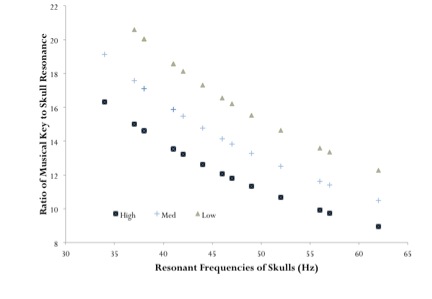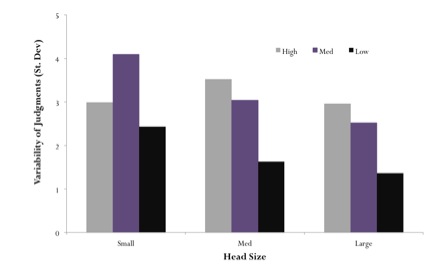
Jitwipar Suwangbutra – jitwipar@gmail.com
Rachelle Tobias – tobiasr@student.wpunj.edu
Michael S. Gordon – gordonm10@wpunj.edu
Department of Psychology
William Paterson University
300 Pompton Road
Wayne, NJ 07470
Popular version of paper 2pMU3
Presented Tuesday afternoon, June 4, 2013
ICA 2013 Montreal
Music preferences are developed from a diverse and multifarious number of influences. Evidence suggests that music preferences begin to form during the last weeks of gestation (e.g., Abrams et al., 1998) and will be influenced by our social and cultural environments as we mature. In addition to external influences, there are intrinsic influences on music preferences related to the idiosyncrasies of our bodies, ears, and brains (Ando & Gottlob, 1979; Peretz, 2002). For example, we know that neurons selectively resonate to frequencies that produce channel-specific preferences (Hutcheon & Yarom, 2000; Peretz, 2006; Schneider et al., 2005), and that easily altered arousal levels directly influence preferences for tempi and musical style (Bernardi et al., 2009; Rickard, 2004; van der Zwaang et al., 2011). One influence that has not been previously investigated, with respect to its influence on music perception, is the skull.
The cochlea (principle auditory sensory organ) is embedded in the temporal bone of the skull. This extremely dense bone creates a resonant structure around the cochlea that amplifies some tones and attenuates others. To clarify this influence, the resonance of the skull is a large part of why your voice will sound so much deeper and richer while hearing yourself talk than will a recording of your voice. Your voice resonates in your skull and around your ear to create that increased richness. Consequently, the resonance of the skull can alter how a listener perceives a sound’s loudness, richness, and timbre (ISO 2631, 1978; Kruger, 1987; Shaw, 1974). Moreover, since the size, density, and even shape of a person’s skull is somewhat unique, that resonance will vary across individuals. Our current research was designed to explore whether this uniqueness in skull resonance might have a direct influence on the kinds of music a person prefers.
The influence of skull resonance on music preference was studied across a series of experiments. Listeners were presented with a set of original melodies (See Fig. 1) and were asked to judge how much they enjoyed each selection. The melodies were simple, single-voiced sequences of piano notes that varied slightly in arrangement and style. Importantly these melodies were presented in each of the 12-major keys of chromatic western music.

Figure 1. Sample melodies used in Experiments 1 and 2 (D ♭)
Following the melody judgments, the resonance of each listener’s skull was recorded by firmly pressing a microphone against the temporal bone while the listener tapped on his or her head. The complex spectra recording from this tapping was analyzed to determine the fundamental frequency, i.e., the fundamental resonant frequency of that person’s skull. Skull frequencies were found to vary between 35 and 65 Hz (See Fig. 2). Women tend to have slightly smaller skulls than men, and consequently tend to have higher fundamental skull frequencies.

Figure 2: Results from Experiment 2, the ratio of Musical Key to Resonant Skull Frequency (Hz). Results are segregated by Lowest, Middle, and Highest preference
The analysis of music preferences revealed an interesting influence of how the skull might subtly influence preferences. In point of fact, the skull was not found to directly influence the melodies that the participants selected at all. Participants preferred a wide range of musical keys and these musical keys had no simple relationship to the resonance of the skulls.
However, skull resonance was found to moderately predict the musical keys that people disliked. Unlike the preferred music, the disliked music tended to be found in a very narrow set of musical keys (See Fig. 3). In addition, mathematically the fundamental frequency of the musical keys themselves tended to have a clear set of non-integer, complex mathematical ratios to the skull. In short, this research suggests that the skull might influence the music that a person dislikes rather than the music a person likes.

Figure 3: Results from Experiment 2 that represent head size by musical key preference (High, Med, Low preferences). Data are in units of standard deviations of judgments and show the relative consistency of Low (dislike) judgments relative to the greater variability in what participants liked
As described the skull creates a kind of resonant chamber around the cochlea. Simple, integer-based ratios between the frequency of the skull, and the prominent frequencies used in a piece of music, will tend to make that music sound somewhat louder and richer to a listener. While there was little influence of resonance on the preferences, musical keys with more complex, non-integer mathematical ratios to the fundamental frequencies of the skull will tend to be sound somewhat thinner, resonate less, and possibly even induce minor acoustic distortions. As a result, our research on this topic suggests that non-resonance between the skull and a musical key may induce a dislike of some music. While there is much research needed to fully explore this relationship more, skull resonance seems to have a subtle influence on musical preferences and selections particularly for the music we do not like.
References
(1) Hutcheon, B. & Yarom, Y. (2000). Resonance, oscillation, and the intrinsic frequency preferences of neurons. Trends in Neuroscience, 23 (5), 216-222.
(2) ISO 2631 (1978). Guide for the evaluation of human exposure to whole body vibration. NASA-STD-3000, 138.
(3) Kruger, B. (1987). An update on the external ear resonance of infants and young children. Ear & Hearing, 8(6), 333-336.
(4) van der Zwaang, M. D., Westerink, J.H.D.M., & van den Broek, E.L. (2011). Emotional and physiological responses to tempo, mode, and percussiveness. Musicae Scientiae, 15, 250-269.